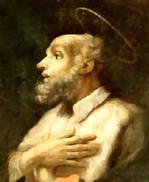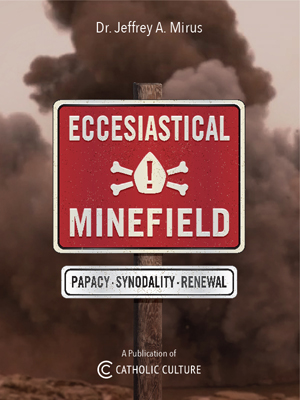Make your gift today!
Help keep Catholics around the world educated and informed.
Already donated? Log in to stop seeing these donation pop-ups.
Archbishop Annibale Bugnini
by Unknown
With the publication of the English translation of Archbishop Bugnini's The Reform of the Liturgy 1948-1975, the wounds and rancor of the council years are revived. The book recounts the battles and misunderstandings between the reforming liturgists and the church musicians. Bugnini himself said that the first ten years following the close of the council were no more than continual fighting with the musicians.
It is never right to impute motives or to attribute ill will, but occasionally such things surface in the records. Surely Bugnini's opposition to the classical heritage of sacred music and the Latin language shows in this work. True, it is disguised under the need for participation of the faithful, understanding of the texts, and simplification of the rites, truly noble objectives of the council fathers. But after devastating the traditions and heritage of a thousand years of musical and liturgical development, there cannot be much remaining on which to encourage any kind of true participation, and understanding and simplification have little left to build on or work with.
An anti-Roman spirit, manifest especially in attacks on Latin as the language of the universal Church, constantly raises its head. One always wonders why Latin was considered to be competitive with the vernacular. Surely the creation of a repertory of vernacular choral music demands that it be constructed on the foundation of the treasury of Latin compositions.
The mere simplification of church music results in the abandoning of music as an art especially in its polyphonic developments, eliminating the masterpieces that have adorned the liturgy for a millenium. A rationalism that demands understanding of every word as essential to active participation, forgetting the moving of man's spirit by the mystery and beauty of music, drives the text into an unreasonably prominent position in liturgical celebration, almost to the total elimination of the art of sacred music, which must be united to the text to form the artistic whole that liturgical music must be. The impoverished translations of the Latin texts into English added an enormous burden to the effort to promote participation of the people as well as understanding of the vernacular texts.
Basic to the conflict between the liturgists and the musicians is a failure to understand clearly the meaning of actuosa participatio populi that the council called for. If indeed singing of pieces by everyone constitutes the epitome of participation, then the art of music in the service of the liturgy is destined for extinction. In 1965, the Fifth International Church Music Congress, meeting in Chicago and Milwaukee, considered the meaning of that concept. A paper by Father Colman E. O'Neill, O.P., (Sacred Music and Liturgy Reform after Vatican II, Rome, 1969 p. 89-108) clearly distinguishes between internal and external participation, and indicates that singing is only one of many means of external participation, not to mention listening.
Just as basic to the struggle between the liturgists and the musicians was a false sense of ecumenism, a problem that surfaced not only in the liturgical discussions but in many other areas considered by the council fathers. Efforts made to restructure the Catholic liturgy into Protestant- like services grew out of this error and met with opposition from many Catholic sources.
Even Bugnini takes up this criticism with reference to the activity of the Protestant monks of Taize whose influence in preparing the reforms remains a mystery.
The conflicts that began in the council commissions and continued in the years following are not dead. Church music lies in a shambles not only in this country but throughout the world, largely as a result of the work of Bugnini. The church musicians have withdrawn from the fray; as a result hardly anything of any value has been forthcoming in the last twenty-five years in composition or performance. The liturgists for their part have produced nothing but an on-going series of vaudeville acts, experiments and novelties; liturgy has become associated with entertainment (dancing, combos, even costuming), so each week must be different, a new act.
When one considers the great hope that the Second Vatican Council initiated and how we looked forward to the promise of new music for the vernacular languages, the integral part that music would have in the liturgy (pars integrans), the freedom to use all styles that were truly art and truly sacred, the call for new music for both Latin and vernacular liturgical texts, the demand that music be written both for congregations and for choirs, the extension of the permission to employ all serious instruments, the encouragement of musicological studies and particularly the advancement of Gregorian chant with the publication of new chant books--all this is what the council fathers ordered and the church musicians hoped to implement. The preservation of tradition along with a natural development of means for active participation and the use of the vernacular were the contribution of the church musicians to the council documents, especially Sacrosanctum concilium. They fought against Bugnini and his allies to keep the art of music in its centuries old role in the liturgy.
They fought to maintain it in the writings of the post-conciliar period, especially in Musicam sacram of 1967, and the fight continues as liturgists continue to insert themselves into the field of sacred music. Cooperation between liturgists and musicians is still a state to be fondly hoped for, but it was not the spirit of Annibale Bugnini as his book shows so clearly.
© Sacred Music, 1990, Church Music Association of America, 5389 22nd Ave. SW, Naples, FL 34116.
This item 3556 digitally provided courtesy of CatholicCulture.org






